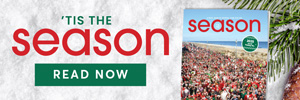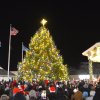There seems to be no escaping the latest culinary buzzword, “farm to table.” Everybody’s jumping on the bandwagon (at least those of us who can still jump), and as I’ve written previously, some restaurants take it more seriously than others.
But that’s only half the story. For every table, there’s got to be at least one farm. And it’s not just about apples or tomatoes or bison: Local farms also grow herbs and spices that can make those apples, tomatoes and buffalo burgers taste even better.
Lavender Fields in Milton is one of those farms, and it's a lot more than just soap, candles and frilly purple tchotchkes. In fact, they incorporate their crops into dozens of fragrant concoctions that make their way onto restaurant menus throughout Delaware.
In October 2002, Baltimore transplants and co-owners Marie Mayor and Sharon Harris purchased the facility from the original “Lavender Lady,” Pauline Pettit. She had bought it in 1994 from John and Martha Heikel, who, interestingly enough, acquired the land in ‘73 from the Brittingham family, owners of none other than the Lewes Dairy.
Lavender has been around for so long that it’s even referred to in the Bible. Highly popular in Victorian times, its calming effects are enjoying a resurgence as massage oils, antiseptics, antifungals and even insect repellents. I have to confide in you that I now find myself faced with the nearly insurmountable task of transitioning from “antifungal” to the subject of food.
Maybe if I just press return….
Ahhh. That’s better. A number of creative chefs use Lavender Fields’ aromatic flowers to kick up their kitchen creations. Hari Cameron, the chef du cuisine at Nage restaurant, incorporates the delicate flavor into sugar cookies and desserts made with lavender cream.
In fact, one of his occasional specials is grilled lamb with lavender, and his steamed clams bask in lavender fish seasoning as they cook.
Mega-restaurateur Matt Haley blends lavender honey with savories and sweets alike. The bees don’t have far to go to perform their appointed duties, because the farm has an apiary encircled by rows and rows of lavender plants.
Kevin Reading from Abbott’s Grill gives his signature lamb stew a floral hint with Lavender Fields’ proprietary blend of Herbs de Provence, while local private chefs Gary and Lorraine Papp integrate lavender into catered dinners they serve at the farm.
Marie and Sharon blend the tiny buds with sugar to enhance lemon meringue pie, lemonade, vinaigrettes, marinades, pasta sauces and even the caramelized crust of crème brûlée.
Strawberry margarita lavender preserves (complete with triple sec and tequila) are intoxicatingly delicious on warm toast.
It’s a fortunate turkey and cheese sandwich that gets to be slathered with chardonnay-infused lavender wine jelly. Marie’s grandson tells her that he loves visiting grandma here in Delaware, but I suspect that he actually shows up for her lavender chocolate-laced pancakes. Smart kid.
French sea salt with lavender is sprinkled onto bread dough brushed with olive oil just before baking. Hot water is steeped with green or white tea leaves stirred with lavender buds and rose petals.
Marie tells me that the elegant flavor of the plant is actually experienced as an aftertaste. The floral accent sits quietly in the background, and you detect it when you exhale. The magic lies in the fact that a very small amount achieves the intended effect. Use too much, and it just tastes bad.
Mint, thyme and sage share the same botanical family with lavender. No wonder it works in so many savory dishes! So jump on the farm to table bandwagon (leave room for the local chefs) and try that delicate, delayed charm. And you can get all you want from Lavender Fields farm just up the road near Milton. Watch out for the bees.
























































